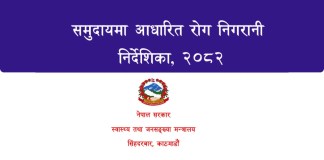Your body balances acidic and alkaline substances to maintain a stable pH. According to StatPearls, the average pH of the human body is 7.4 on a scale of 0 to 14, ranging from acidic to alkaline.
Having a slightly alkaline pH is important to keep your blood oxygenated. Having a pH below 7.35 may be a sign of acid disorders such as metabolic or respiratory acidosis.
But what we eat and drink does not always have an effect on the pH of our blood, which our heart, kidneys, and lungs regulate, according to the National Kidney Foundation. Typically, we complain about symptoms of acidity when acid moves from the stomach, where it belongs, to the throat and other places where it can cause discomfort. Changes to your diet and other parts of your lifestyle may address those symptoms.
1. Limit or Avoid Acidic Foods
When acid from the stomach flows back up through the esophagus, it can cause heartburn and gastroesophageal reflux disease (GERD). Symptoms may be uncomfortable and triggered by certain high-acid foods.
These triggers may be different for everyone. But according to Mayo Clinic, acidic foods and beverages may include:
- Peppermint
- Coffee
- Chocolate
- Alcohol
- Fatty meats
- Cheese
2. Stay Hydrated
Severe dehydration can help cause acidosis, according to MedlinePlus. That’s more than just feeling a little parched, however. MedlinePlus lists symptoms of severe dehydration that include:
- Lack of urination or dark urine
- Confusion
- Rapid heartbeat
- Rapid breathing
- Shock
- Delirium
- Dry and shriveled skin
- Dizziness
- Sunken eyes
If you are experiencing these symptoms, contact a healthcare professional as soon as possible, as they may be signs of numerous serious medical conditions.
Generally staying hydrated, however, is a good idea regardless of your symptoms. It can help your kidneys excrete more acid and potentially help restore the blood’s pH balance.
Drinking alkaline water, which has a higher pH than tap water, also may be effective in reducing acidity. Research is inconclusive, however, about its long-term effects and potential health risks, according to Mayo Clinic.
3. Eat Natural Foods
An alkaline diet, which purports to restore your body’s pH balance by focusing on alkaline-rich foods, has pros and cons.
According to Cleveland Clinic, foods in this diet typically are natural, nutritious, and generally healthy. They include:
- Beans and legumes
- Carrots
- Fruits
- Grains
- Leafy greens
- Nuts
- Seeds
These foods alone will not drastically alter your body’s pH in the long term, however. And a strict alkaline diet may be costly and rob you of other nutrients you may need.
Ask your doctor or a registered dietician before making any dietary changes to ensure you are consuming the right foods to address your symptoms and stay healthy.
4. Take Your Medications
Health issues such as diabetes, kidney disease, liver failure, and cancer can cause different types of acidosis, according to MedlinePlus.
If you stop taking medication for these or other conditions, your body may react in ways that resemble symptoms of having too much acid in the wrong spot. If you are prescribed proton-pump inhibitors for GERD or similar stomach conditions, for example, discontinuing them can cause your body to experience acid rebound, according to Harvard Health Publishing.
Ask your doctor before starting or stopping any medication, as well as potential medication interactions.
5. Ask About Sodium Bicarbonate
Some forms of acidosis — like hyperchloremic acidosis — occur when your body loses too much sodium bicarbonate, a chemical compound that functions as an antacid, according to Mayo Clinic. This can be the case if you have severe diarrhea, for instance.
Sodium bicarbonate is better known as baking soda, and your doctor can prescribe you tablets or powder supplements to treat acidosis, heartburn, and indigestion.
But make sure to talk to your doctor before trying this remedy, however, as a blood or urine test to confirm acidosis usually is required.
Great Job Jody Braverman, CPT, FNS, RYT & the Team @ google-discover Source link for sharing this story.





